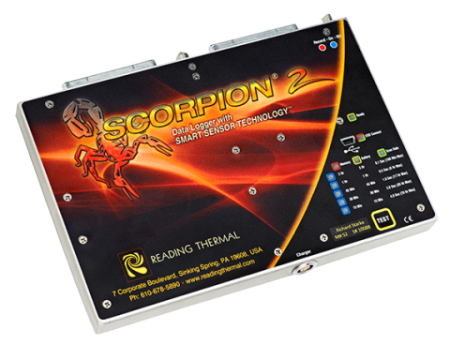A perfectly baked loaf depends on an oven that bakes with consistent, controlled heat. However, taking the time to monitor and calibrate oven temperatures for busy commercial kitchens thoroughly can seem like a challenging task. Yet the benefits of regular thermal profiling and calibration far outweigh the effort. With thermal profiling and industrial oven calibration, you can optimize efficiency, save on energy costs, reduce waste, and, most importantly—reliably deliver perfect loaves, batch after batch.
We’ve spent decades establishing our brand as an industry staple at Reading Thermal, providing precise instruments to paint the clearest picture of your oven temperature profiles. Our systems are designed with bakers in mind and can be integrated into any baking operation, from small artisanal bakeries to large-scale commercial manufacturers.
What is Thermal Profiling?
Thermal profiling is the process of measuring and recording temperature data throughout an oven-bake cycle. This allows you to analyze the performance of your industrial ovens, identify any inefficiencies or deviations, and make necessary adjustments for optimal results.
There are several components involved in thermal profiling:
- Data Loggers: These devices are placed inside the oven during a bake cycle and record temperature data at specific intervals.
- Smart Sensors: These sensors are attached to the data loggers and provide real-time temperature readings.
- Thermal Barriers: These protect the data loggers from direct heat exposure, allowing for more accurate readings.
- Software: The collected temperature data is then uploaded to software programs to represent the oven’s temperature profile visually.
Why is Industrial Oven Calibration Important?
Industrial ovens are complex machinery with various components that work together to create a precise baking environment. However, these components may experience wear and tear over time or become misaligned, resulting in inconsistent oven temperatures. This can lead to under or overcooked products, which ultimately affects the quality and consistency of your baked goods.
By regularly calibrating your industrial ovens, you can ensure that they operate at their intended temperature and produce consistent results. Calibration involves adjusting or repairing any components that may have deviated from proper functioning, ensuring that your oven consistently operates at the desired temperature.
How to Use Thermal Profiling for Industrial Oven Calibration
Thermal profiling and oven calibration go hand in hand. Using thermal profiling, you can comprehensively understand how your oven is performing and identify any areas that require calibration. Here are some steps to follow when using thermal profiling for industrial oven calibration:
- Set up Data Loggers: Place data loggers inside the oven, following the manufacturer’s instructions.
- Run a Bake Cycle: Run a normal bake cycle with the data loggers and intelligent sensors in place to record temperature data.
- Analyze Results: Use software programs to analyze the collected temperature data and generate visual representations of your oven’s temperature profile.
- Identify Deviations: Compare your oven’s temperature to your baked goods’ ideal profile. Any deviations or abnormalities may indicate areas that require calibration.
- Calibrate Oven: Use the information from thermal profiling to calibrate your industrial oven and make necessary adjustments to ensure optimal performance.
- Repeat Process: To ensure consistent results, the thermal profiling and calibration process must be repeated regularly.
Thermal profiling and industrial oven calibration are crucial for maintaining consistent, high-quality baked goods. With Reading Thermal, you can use thermal profiling and industrial oven calibration to get the best results. If you’re interested in our services, call us at (610) 678-5890 Ext. 2 or contact us online for more details about our innovative products.

